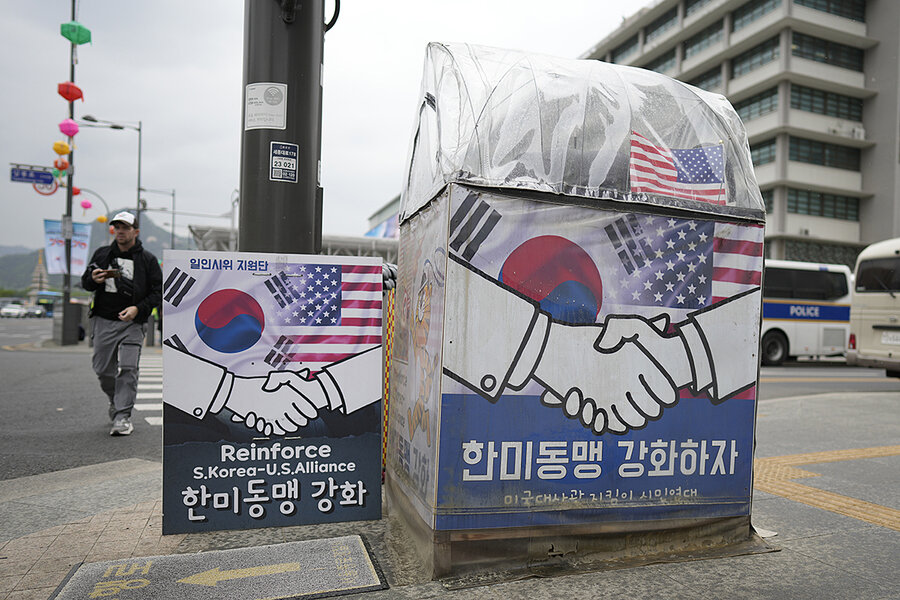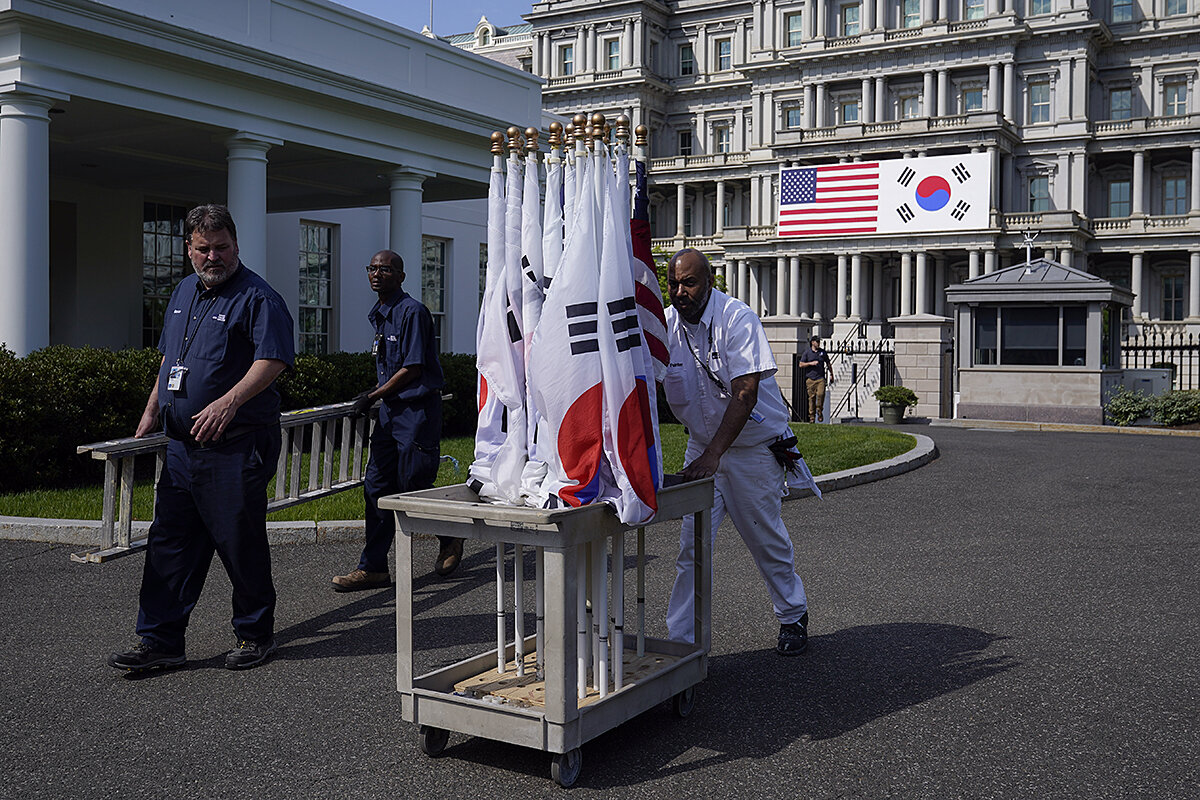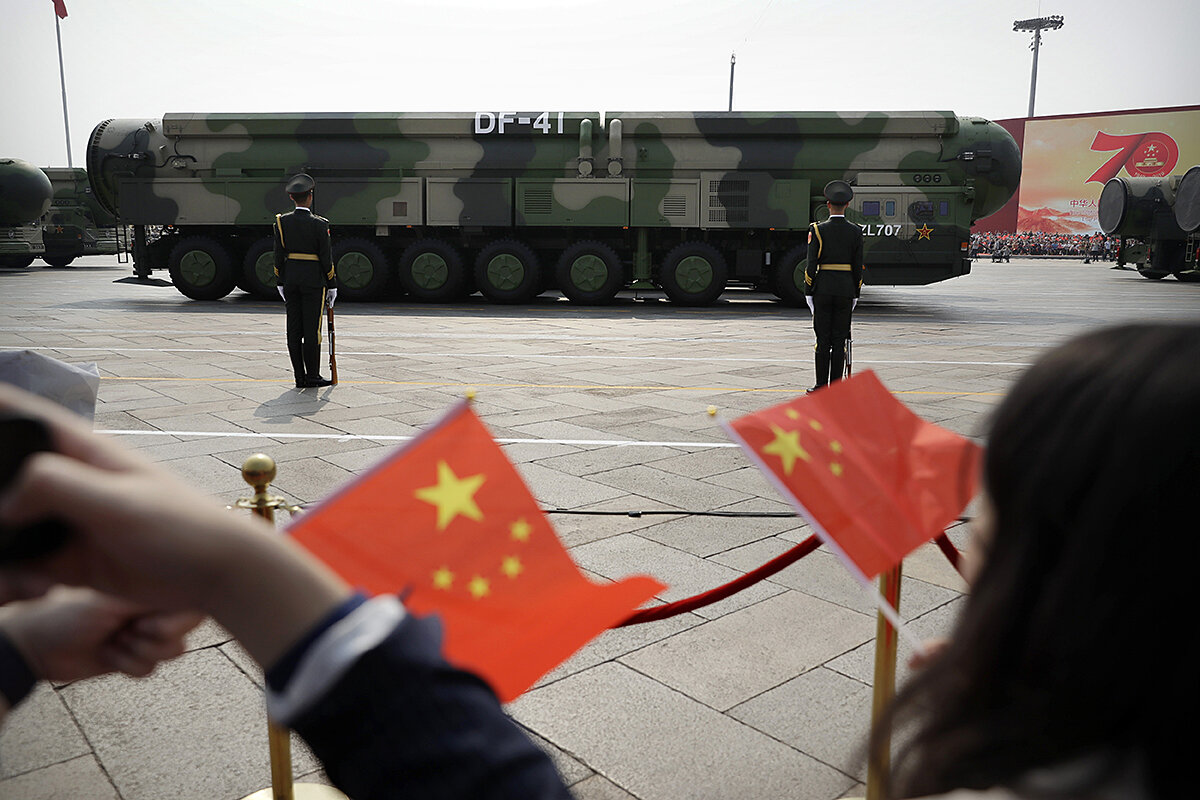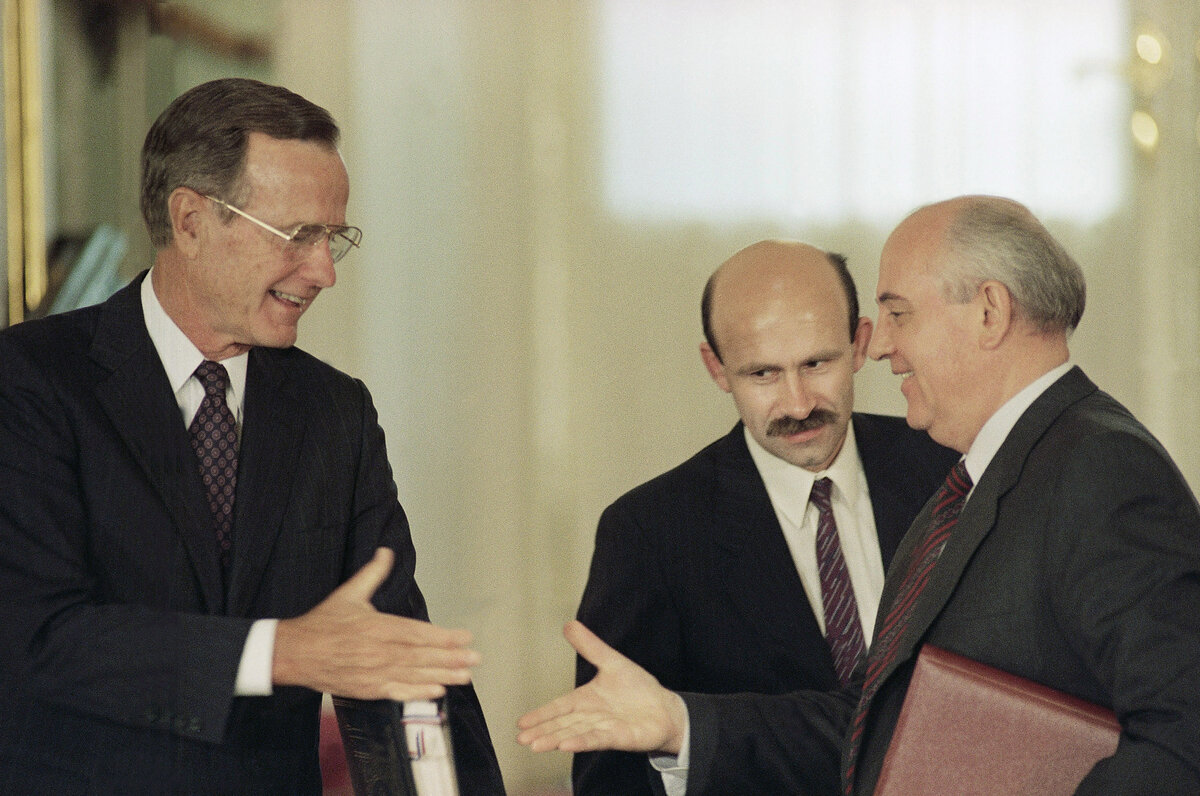A third nuclear age? What to expect from US-South Korea summit.
Loading...
| WASHINGTON
When South Korea President Yoon Suk Yeol arrives at the White House Wednesday for a state visit, conversations are likely to focus heavily on nuclear weapons – and not just the threat posed by North Korea’s growing arsenal.
Also on the agenda is China’s own expanding arsenal and its potential – at current rates of weapons construction and systems development – to reach near-parity with the United States and Russia within a decade.
And perhaps the most sensitive topic of all: the continuing dependability of the American nuclear umbrella for South Koreans. Worried by what they see as a less reliable U.S., many increasingly support their country building a nuclear deterrence of its own.
Why We Wrote This
A story focused onAmid concerns about America’s nuclear umbrella and China’s rapid rise toward parity with the United States and Russia, the world could be on the doorstep of a fresh era of nuclear proliferation. How should the U.S. respond?
The top billing accorded nuclear weapons as President Yoon sits down with President Joe Biden reflects the rapid rise to prominence of what many experts refer to as a third nuclear age after first, the frightening U.S.-Soviet arms race, and then, an expansion of the nuclear club that included China, India and Pakistan, and Israel.
Indeed, after decades of nuclear nonproliferation consensus and arms control efforts, many experts place the world on the doorstep of what could be a new era of proliferation. The causes: China’s rapid rise to “near-peer” status, perceptions among U.S. allies and partners of a less reliable American nuclear umbrella, and a multipolar world of “middle powers” – like South Korea – considering their own nuclear deterrence.
“We’re certainly at an inflection point, and not a very reassuring one,” says Kelsey Davenport, director for nonproliferation policy at the Arms Control Association in Washington. “The established nuclear order is under significant stress,” she adds – first from the nuclear-weapons states, for whom “nonproliferation no longer seems to be the global and uniting priority that it has been,” and then from regional powers who see a less secure world and wonder if they might need their own nukes after all.
Those include a number of U.S. allies and partners – from South Korea and Japan to Saudi Arabia, Turkey, and even Australia – who might view emerging global power rivalries and conclude it’s time to go nuclear.
“For so long our primary preoccupation when it came to nuclear proliferation was with the rogue states, Iran and North Korea, but now we see it’s our friends who are contemplating acquiring nuclear weapons,” says Jon Wolfsthal, senior fellow in nuclear issues at the Center for a New American Security (CNAS) in Washington.
“For them, the U.S. is seen as less dominant and less reliable,” he adds, “and they are worried the U.S. won’t be there with the security guarantees that reassured them in the past.”
That is why he anticipates hearing a strong U.S. security commitment to South Korea – including a prominent reference to nuclear protections – at the conclusion of the Biden-Yoon meetings.
“I fully expect this summit will deliver a reaffirmation of the U.S. nuclear umbrella – and in response, reaffirmation of South Korea as a nonnuclear state,” says Mr. Wolfsthal, who served as senior director for arms control and nonproliferation in the Obama White House. “We’ll hear it restated that South Korean nuclear weapons are not in accord with the alliance.”
Nuclear power tech
But another dimension altogether of a looming era of nuclear proliferation, other experts say, is the rush to provision countries with the nuclear power technology and equipment that can also produce fuel for nuclear weapons.
“I’m afraid the wheels are falling off the nonproliferation regime, and guess what? It’s largely at our own doing,” says Henry Sokolski, executive director of the Nonproliferation Policy Education Center in Washington.
Countries including Saudi Arabia are shopping around for power plants that could generate nuclear weapons fuel – even as China embarks on a “fast reactor” building boom that could deliver weapons-grade plutonium for its own buildup, he says.
“We used to be very concerned about spreading the means for developing nuclear weapons,” Mr. Sokolski adds. “Now we are cruising towards a tipping point” of a new generation of nuclear states.
Yet other experts worry that a focus on proliferation risks diverting attention from the major nuclear challenge they see the U.S. facing in the coming decade – China’s rise to “near-peer” status.
“I don’t think proliferation is the main issue, I think [it’s] what the Biden administration identified in its national security strategy as our biggest emerging security challenge – that for the first time in our history, we will have to deter two great nuclear powers at the same time,” says Robert Soofer, deputy assistant secretary of defense for nuclear and missile defense policy in the Trump administration.
China is believed to have about 400 nuclear weapons – well below the 1,550 both the U.S. and Russia are allowed under the New START Treaty. But the U.S. estimates that at its current rate of expansion, China will have 1,000 by 2030 and 1,500 by 2035.
Beijing “will essentially have parity by 2035,” Dr. Soofer says, “and that presents the U.S. with a world we’ve never faced before.” He imagines a “worst-case scenario” where the U.S. finds itself facing off against a Russia “at war with NATO” in Europe – and a China, reassured by its nuclear parity, that invades Taiwan.
To meet the “China challenge,” Dr. Soofer says the U.S. must consider a “modest increase” in nuclear warheads. Moreover, noting that the U.S. has no nuclear weapons in Asia, he says the Pentagon should proceed with plans, currently unfunded by the Biden administration, to build sea-launched cruise missiles.
Internal U.S. debate
Indeed, those proposals for bumping up the U.S. arsenal were among the recommendations issued recently by a study group of nuclear policy experts – Dr. Soofer among them – organized by the Lawrence Livermore National Laboratory in California.
That report caused a brouhaha in Washington, pitting nuclear hawk against dove. But Dr. Soofer, now a senior defense fellow at the Atlantic Council in Washington, says such contention over nuclear strategy is not inevitable. He notes that Republican and Democratic administrations and Congresses since President Barack Obama have found common ground on the modernization of the U.S. nuclear arsenal.
At the same time, he predicts that with China generally front and center on the political stage, such a complex topic as “Do we have enough nuclear weapons?” could become a hot topic of political debate.
“The Republicans are going to argue that the new world we’re in gives us no choice but to add some nuclear capability, and the administration is going to say, ‘No, we don’t have to add capability at this time.’ Given what’s at stake,” he adds, “I really see this becoming a critical national election issue in 2024.”
Opponents of any increase in the U.S. arsenal say there are other, better ways to address both China’s nuclear build-up and proliferation pressures.
Calling proposals for expanding the U.S. arsenal “absurd and dangerous,” the Arms Control Association’s Ms. Davenport says that instead of taking steps that could lead to a destabilizing arms race, the U.S. should redouble efforts with allies and adversaries alike to discourage going nuclear.
Fortifying alliances and reassuring allies over security guarantees – as she sees the U.S. doing with Asian allies and in Europe – will make for a safer U.S. in the long run, Ms. Davenport says. Moreover, the U.S. needs to move beyond ineffective sanctions and get back to the “hard work” of negotiating “viable [nuclear] off ramps” for adversaries like Iran and North Korea.
Cold War lessons
Others say that even the impending world of two peer nuclear powers is not so different that the U.S. should disregard the example of the arms race with the Soviet Union.
“The lesson of the Cold War is that you can’t build your way to dominance,” says Mr. Wolfsthal of CNAS. “We shouldn’t forget that in the Cold War, we ended up with 70,000 nuclear weapons – and insecurity.”
Instead of building more nuclear weapons or resigning itself to a new age of proliferation, the U.S. should strengthen alliances and fashion new security arrangements with key partners based on conventional forces – as the U.S. is doing with Australia, he says.
Moreover, the U.S. should turn more of its attention to showing the world that it is serious about nonproliferation and nuclear arms reduction, Mr. Wolfsthal says.
“The U.S. needs a global narrative that says we are actively pursuing a world that is not awash in nuclear weapons, and explains why this means more security,” he says. “That narrative is a big part of what is missing.”









